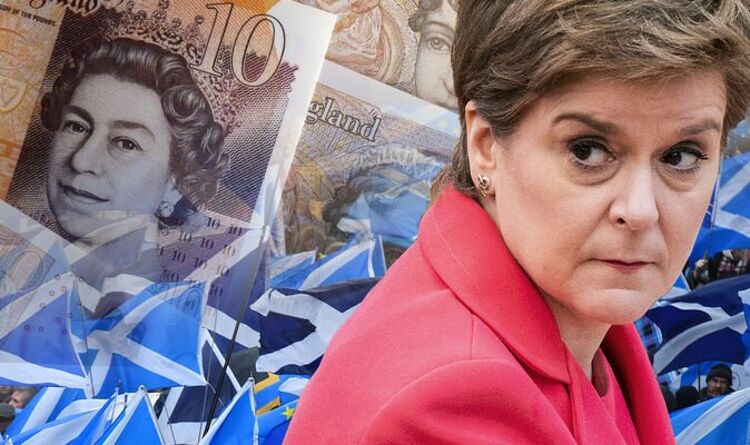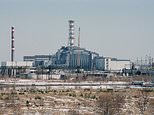The SNP is putting plans in motion to hold another Scottish independence referendum before the end of 2023 – nine years after the first disastrous vote that saw Scots detail the party’s plan for Scotland. First Minister Nicola Sturgeon has expressed her wish for Scotland to one day even rejoin the European Union, with suggestions the nation could even adopt the Euro as its sole currency as an independent country. A huge part of this has been driven by the SNP’s continued attacks against Britain, which the party continues to insist “happened against the will of the Scottish people”.
This is because Scotland voted by a huge margin of 62 percent to 38 percent to remain in the EU – byt wasn’t enough to stop the UK ending nearly 50 years of membership to the bloc.
But while the UK is set to pay the EU nearly £40billion over a number of years as part of a Brexit divorce settlement, Scotland could be left footing a much higher bill, a leading political expert has warned.
Ben Harris-Quinney, chairman of the Bow Group think tank, explained to Express.co.uk: “Scotland has a significant share of UK national debt, and there are several major UK assets in Scottish territory like North Sea oil and gas, military bases, and Crown territory.
“At a minimum there would have to be a negotiation on ownership of property and payments in either direction to unbind these areas.
“Scotland would likely want to keep tariff free trade with the UK, and a liberal border arrangement with the UK.
“It would rely heavily on imported goods, the majority of which coming from the UK initially, and perhaps for the foreseeable future.
But he warned: “The SNP has previously suggested the share of national debt would be calculated on a per capita basis, which would mean Scotland would owe the UK £205 billion on core national debt, and potentially £380 billion on total liabilities.
“That would place Scottish debt to the UK at either 137 percent of GDP or 251 percent of GDP, which would leave Scotland roughly where Greece is in terms of national debt as a starting point.”
Alistair Jones, associate politics professor at De Montfort University in Leicester, outlined several different disastrous economic scenarios facing an independent Scotland.
One would see Scotland taking on a chunk of the UK’s huge national debt, which could see it make an annual payment of £10billion “for an extended number of years”.
Alternatively, he argued Scotland could be hit with a huge £181billion bill if the financial model used in the split of Czechoslovakia is followed.
Professor Jones told Express.co.uk: “If there is a successful move to Scottish independence, it is most likely that Scotland will have to take on part of the UK’s burden of debt.
“What is not clear, is how much that would be, or how it could be done.
“There could be an annual payment to help in the servicing of the UK national debt and for that to be in place for an extended number of years.
“This could be something like £10billion per year, but that will depend upon the agreed legacy sum that the Scots would owe, and the length of time of repayment.
“Alternatively, a proportion of the UK national debt could be transferred to Scotland upon gaining independence.
“An example is the splitting of Czechoslovakia, where the debt, liabilities and assets were split 2:1 between the Czech Republic and Slovakia, based around population size.
“If that model was followed, the split would be 11:1 between Scotland and the rest of the UK.
Professor Jones added: “If UK national debt is around £2trillion, the 11:1 ratio will see the Scots take on around £181billion.
“There will also be assets to take into consideration (e.g. oil and gas) and these will have to be factored in, along with any other liabilities (total UK liabilities, pre-Covid, were around £4.5trillion).
“Yet there could be a decision to split the debt by proportion of GDP or proportion of government spending.”




